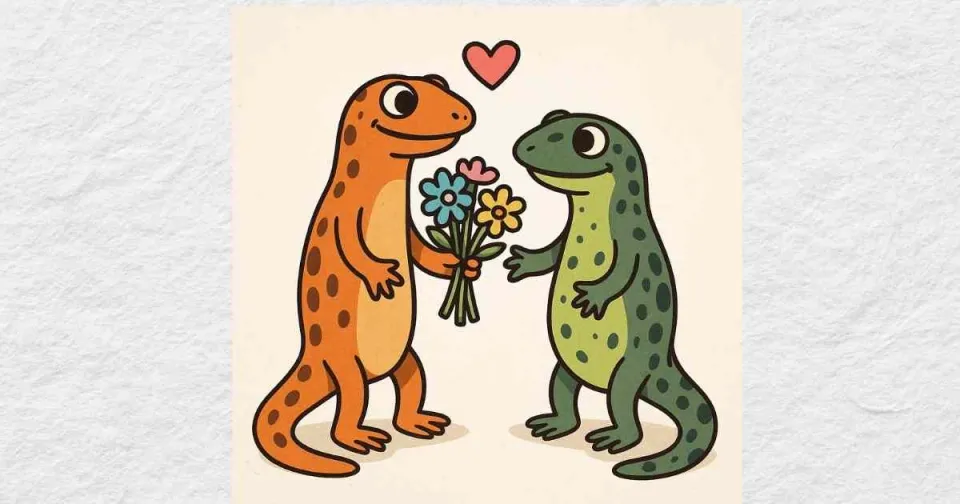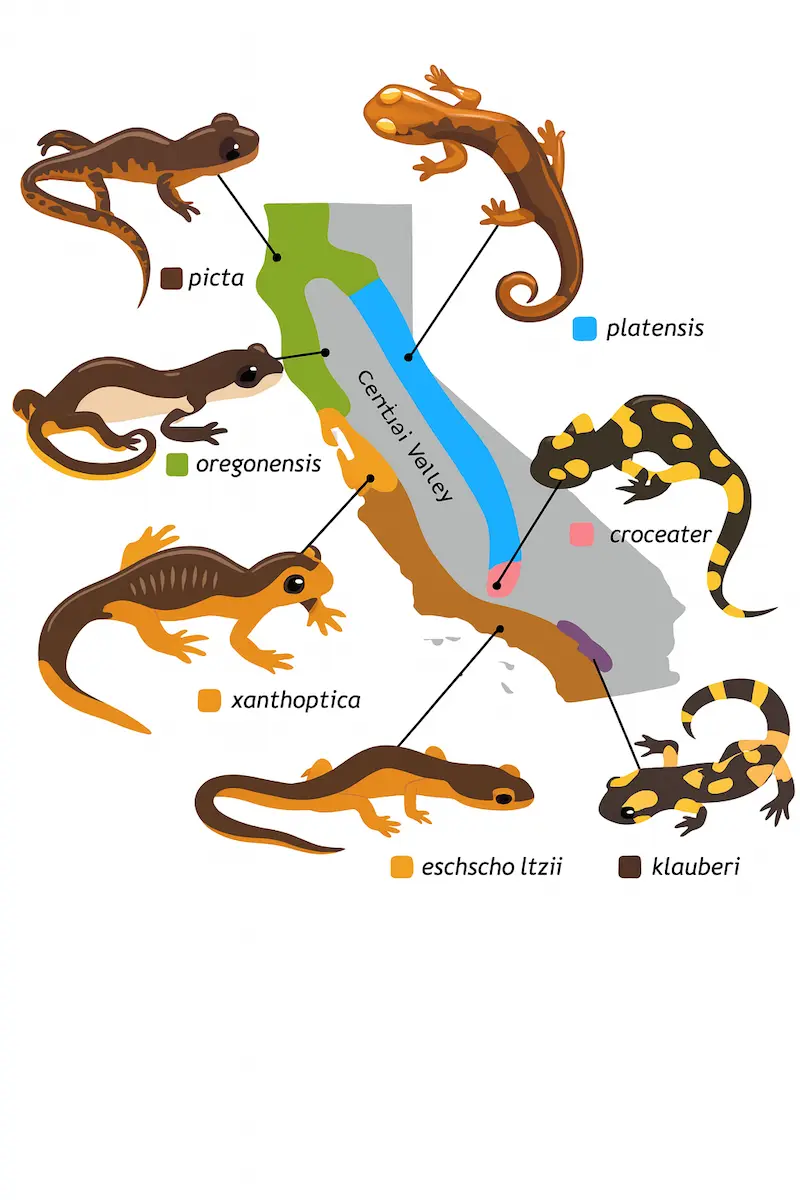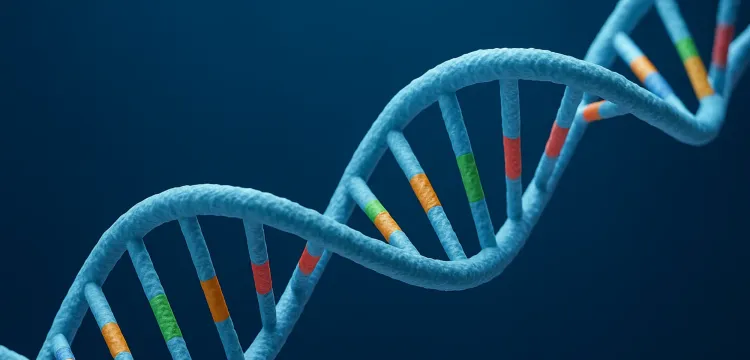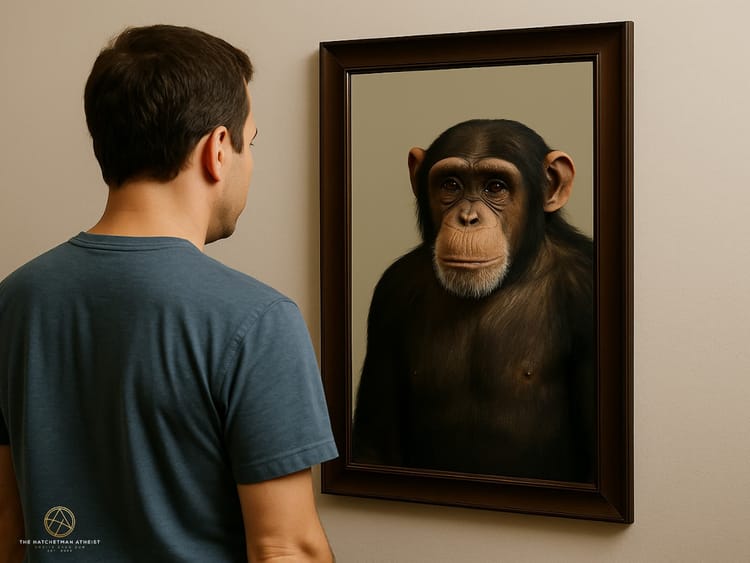Ring Species, Romance, and...Salamanders?

Table of contents
Excerpt: The Ensatina salamanders of California form a living ring species, revealing how asymmetric love lives and evolutionary misfires can teach us about speciation.
Ring Species 101: Ensatina around the Central Valley
The Ensatina eschscholtzii salamander complex is often hailed as the biological equivalent of a sprawling family reunion that nobody can quite leave. Wrapping around California’s Central Valley, they form a classic ring species—best imagined as an evolutionary conga line. Each salamander can “dance” with its immediate neighbors, but by the far end the dancers are so different that pairing up leads to awkward misunderstandings and stepped tails. It’s evolution’s way of showing that boundaries form gradually, then suddenly.

Background: Evolution’s Ring Road
Picture the Central Valley as a vast, impassable shopping mall. Ensatina—preferring the outdoor paths—spread around it instead of through it. Along the way, traits shifted bit by bit: new coat patterns here, tweaked pheromones there. Like biological telephone, each population resembled its neighbor, but by the time the message traveled full circle, the ends were speaking different dialects.
The Study: Salamander Speed Dating (1986)
At the southern tip of the ring, two populations meet: E. e. eschscholtzii (lowlands/woodlands) and E. e. klauberi (highlands). In 1986, Wake, Yanev, and Brown ran mate-choice experiments to see who fancied whom. The result: a wonderfully lopsided romance—textbook asymmetric mate recognition.
Experimental Design (Who, Where, How)
Participants: roughly matched samples from both populations, with ~20 females per group. Conditions: temperature, humidity, and light tuned to courtship norms. Measures: time to initiate, frequency of courtship displays (tail-wagging, approach), and female receptivity (tail undulation vs. avoidance).
Results: Asymmetric Mate Recognition
E. e. eschscholtzii females behaved like connoisseurs at a dubious buffet, rejecting klauberi males in the vast majority of trials (≈90%). Klauberi females, by contrast, accepted eschscholtzii males in roughly two-thirds of cases (~65%). Klauberi males also fared poorly with eschscholtzii females—suggesting their chemical pickup lines lost appeal somewhere along the evolutionary route.
Why the Lopsided Love? Reinforcement & Hybrid Costs
The simplest explanation is reinforcement: if hybrid offspring are less fit, selection favors choosier females. E. e. eschscholtzii appears to have evolved a strong aversion to klauberi males—reducing costly matings—while klauberi females face weaker penalties and remain more accommodating.
Chemical Conversations and Pheromonal Faux Pas
In Ensatina, pheromones are the pickup lines. Over time, klauberi male signals drifted away from what eschscholtzii females find acceptable. Under stronger hybrid-avoidance pressure, eschscholtzii females refined their “nose” for compatibility, rejecting mismatched suitors. Klauberi females, experiencing different costs, kept the door open.
Why This Matters for Speciation
Beyond the soap opera, the Ensatina complex shows how speciation can be gradual, uneven, and asymmetric. Female choice can harden boundaries even while genes flow around much of the ring. For more evolution basics, see How the Eye Evolved and a genetics reality check in the 98% human–chimp question.
Conclusion: Evolution’s Messy Romance Novel
Ensatina eschscholtzii is a living example of evolution’s taste for complexity and the occasional comedic twist. Asymmetric mate recognition isn’t a footnote—it’s a window into how species form, how choices evolve, and how gradual changes can eventually draw stark lines.
FAQ
What is a ring species, and why is Ensatina the classic example?
A ring species is a chain of neighboring populations that interbreed locally, but the end populations meet again and no longer interbreed. Ensatina encircles California’s Central Valley: adjacent groups can mate, yet the southern “meeting point” acts like a species boundary—perfect for studying speciation in real time.
What does “asymmetric mate recognition” mean here?
Females of one population (eschscholtzii) reject males of the other (klauberi) far more than the reverse. That asymmetry likely reflects selection against low-fitness hybrids—a process known as reinforcement.
How do pheromones influence Ensatina courtship?
Males advertise with chemical signals. Divergence in those signals can make females from another population unresponsive. In Ensatina, klauberi male pheromones appear less attractive to eschscholtzii females, helping maintain reproductive barriers.
Where can I read the classic study?
See Wake, Yanev, and Brown (1986, Copeia) for the original mate-choice experiments. Later work (e.g., Moritz et al., 2001, Evolution) adds broader phylogeographic context.
Works Cited
- Moritz, Craig, et al. “Comparative Phylogeography of North American Refugia: Evidence from the Avifauna and the Salamander Ensatina eschscholtzii.” Evolution, vol. 55, no. 3, 2001, pp. 653–666.
- Wake, David B., Kenneth P. Yanev, and Robert M. Brown. “Asymmetrical Mate Recognition in the Ensatina Complex of Salamanders: Experimental Evidence of Reproductive Isolation.” Copeia, vol. 1986, no. 3, 1986, pp. 515–526.





Comments ()